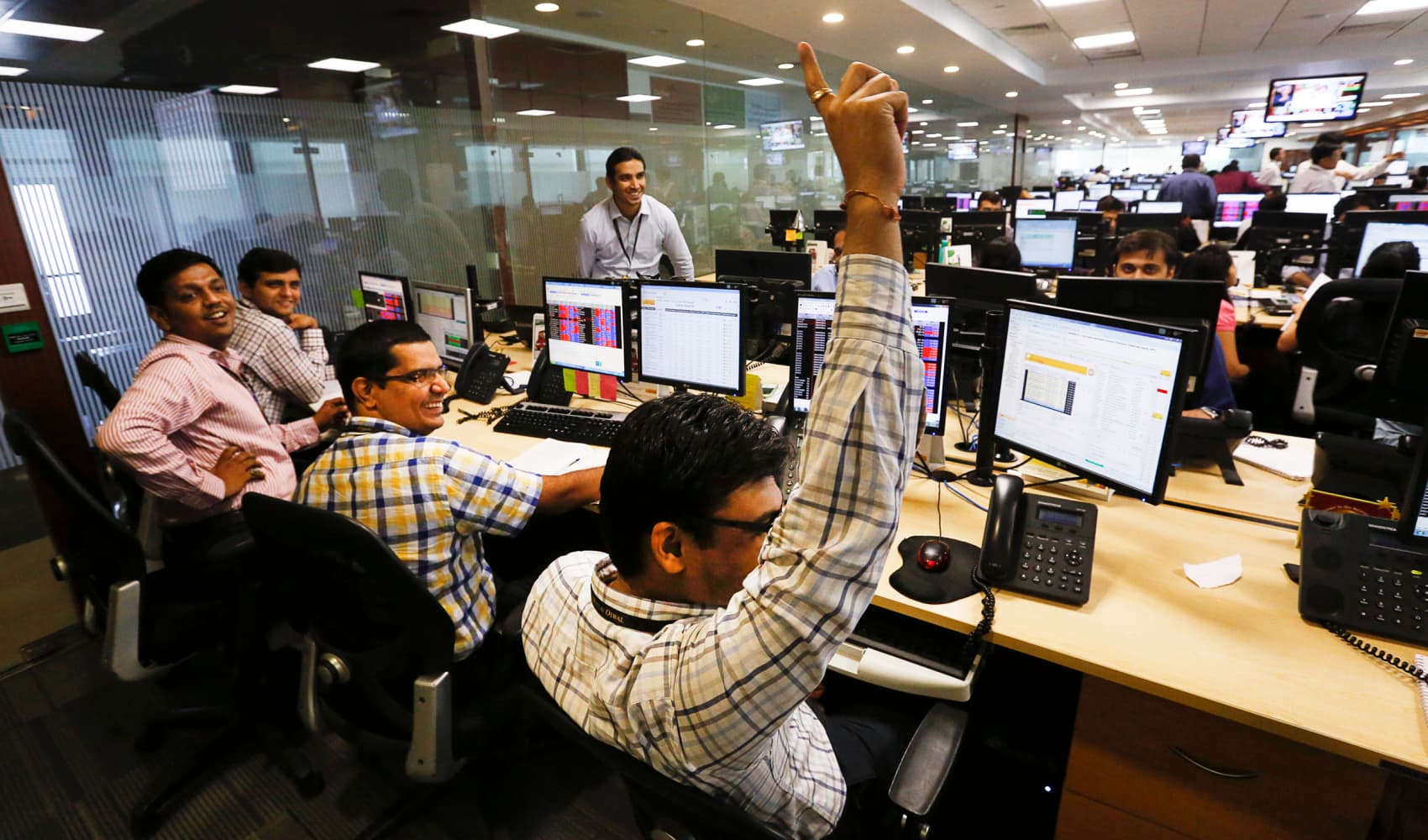Economic Fears: American Airlines Ditches 2025 Forecast
American Airlines Turbulence: Ditching 2025 Forecast Amid Economic Storm Clouds
Introduction: A Bumpy Ride Ahead?
Hold on tight, folks! It looks like we’re in for some potential turbulence in the airline industry. American Airlines, a giant in the skies, has just thrown a curveball by withdrawing its financial guidance for 2025. This isn't just a minor adjustment; it's a significant move that speaks volumes about the uncertainty swirling around the US economy and its impact on travel. But why the sudden change of course? Let’s dive in and unpack what this means for travelers, investors, and the airline industry as a whole.
American Airlines Joins the Chorus of Caution
American Airlines isn't alone in hitting the brakes on future projections. They're joining the ranks of other major players like Delta and Southwest, all citing similar concerns about the economic climate. It’s like watching a flock of birds suddenly change direction – something's definitely in the air. This collective decision raises a crucial question: Are these airlines seeing something we're not? The answer is likely yes, and we will explain it further in this article.
The Numbers Don't Lie: Second Quarter Projections
Let's get down to brass tacks and examine the specifics. American Airlines is now anticipating second-quarter adjusted earnings of between 50 cents and $1 per share. This is a notable dip compared to the previously estimated 99 cents per share. Furthermore, the airline projects second-quarter revenue to range from -2% to +1%. This is a far cry from the sunny skies they were hoping for, indicating that the winds have shifted considerably.
CEO Robert Isom's Perspective: A Shift in Travel Patterns
According to CEO Robert Isom's insights on CNBC's "Squawk Box," a significant factor is the unexpected decline in domestic leisure travel. "We came off a strong fourth quarter, saw decent business in January and really domestic leisure travel fell off considerably as we went into the February timeframe," Isom stated. Think of it as the post-holiday blues hitting the airline industry – but with potentially longer-lasting implications. What changed? The economy, inflation, and rising costs of travel all took their toll.
H2: The Ghost of Economic Uncertainty: What's Lurking?
H3: Inflation's Lingering Shadow
Inflation remains a persistent worry. While it has cooled somewhat from its peak, prices for everything from gas to groceries are still elevated. This pinch on consumers' wallets is forcing them to make tough choices, and leisure travel is often the first thing to be cut from the budget. It’s the economic equivalent of a leaky faucet, slowly but surely draining people's disposable income.
H3: Interest Rate Hikes: A Chilling Effect
The Federal Reserve's series of interest rate hikes, designed to combat inflation, have had a ripple effect across the economy. Higher borrowing costs can stifle business investment and consumer spending, which, in turn, can dampen travel demand. The cost of borrowing money to travel is simply too high for some families now.
H3: Geopolitical Tensions: A Global Jitters
Geopolitical instability and global tensions add another layer of uncertainty. These events can spook investors and consumers alike, leading to a more cautious approach to spending and travel. It's like a constant background hum of anxiety, making people think twice before booking that vacation.
H2: The Leisure Travel Dip: A Closer Look
H3: The Post-Pandemic Hangover
Remember the pent-up demand for travel after the pandemic lockdowns? Well, that surge is starting to fade. The initial enthusiasm has waned, and people are settling back into more normal spending habits. It was fun while it lasted, but reality is setting back in.
H3: Competition from Alternative Experiences
Travel is facing increasing competition from other leisure activities. From streaming services to local experiences, there are more ways than ever to spend your free time and disposable income. The pie is only so big, and travel has to fight for its share.
H3: The Rise of "Revenge Spending" Fatigue
"Revenge spending," the urge to splurge after periods of deprivation, fueled a lot of travel in the immediate aftermath of the pandemic. However, that trend is also losing steam. People are realizing that splurging doesn't necessarily equate to happiness, and they're becoming more mindful of their spending.
H2: Business Travel: A Potential Lifeline?
While leisure travel is facing headwinds, business travel is showing some signs of resilience. Companies are increasingly recognizing the value of face-to-face interactions and are resuming business trips, though in a different format. Is this going to be enough to buoy the airlines? Time will tell, but it looks promising.
H2: What Does This Mean for Travelers?
So, what does all this uncertainty mean for you, the traveler? It’s a mixed bag. On one hand, airlines might become more aggressive with promotions to stimulate demand. Keep an eye out for deals and discounts, as airlines try to fill those seats. On the other hand, if demand remains weak, airlines might reduce capacity, leading to fewer flight options and potentially higher fares on popular routes. Planning ahead and being flexible with your travel dates can become even more crucial.
H2: The Investor's Perspective: Navigating the Turbulence
For investors, the airline industry is currently a bit of a rollercoaster. The uncertainty surrounding the economic outlook and travel demand makes it a challenging sector to navigate. Investors need to carefully consider the risks and potential rewards before taking the plunge. Diversification is key!
H2: Airline Strategies for Survival
Airlines aren't just sitting idly by. They're implementing various strategies to weather the storm. These include:
- Cost-cutting measures: Streamlining operations and reducing expenses to improve profitability.
- Capacity management: Adjusting flight schedules and routes to match demand.
- Focus on ancillary revenue: Increasing revenue from add-ons like baggage fees and seat upgrades.
- Enhancing the customer experience: Trying to draw more customers to specific brands with better service, food, or perks.
H2: The Long-Term Outlook: Will the Skies Clear?
Predicting the future is always a risky business, especially in the volatile airline industry. However, most experts believe that the long-term outlook for air travel remains positive. As the global economy recovers and consumer confidence returns, demand for travel is expected to rebound. But, there will be some bumps in the road.
H2: The Power of Data and Analytics
Airlines are increasingly relying on data and analytics to better understand travel patterns and optimize their operations. By analyzing vast amounts of data, they can make more informed decisions about pricing, routes, and capacity. It's like having a crystal ball, but based on hard numbers rather than mystical powers.
H2: The Role of Technology: Innovation in the Skies
Technology continues to play a transformative role in the airline industry. From online booking platforms to in-flight entertainment systems, technology is enhancing the customer experience and improving operational efficiency. We can only imagine what innovations are on the horizon, but they will certainly shape the future of air travel.
H2: Sustainability and the Future of Aviation
Sustainability is becoming increasingly important for airlines. They are investing in more fuel-efficient aircraft, exploring alternative fuels, and implementing other initiatives to reduce their environmental impact. Consumers are becoming more eco-conscious, and airlines that prioritize sustainability will have a competitive advantage.
H2: The American Airlines Pivot: What Happens Next?
American Airlines' decision to withdraw its 2025 forecast signals a significant shift in its strategy. The airline is likely reassessing its priorities and preparing for a more challenging economic environment. We will be watching closely to see how they adapt and navigate the turbulence ahead.
Conclusion: Navigating the Uncertain Skies
American Airlines pulling its 2025 forecast isn’t just an isolated incident; it’s a symptom of broader economic anxieties impacting the entire airline industry. From inflation to fluctuating travel demands, the skies are far from clear. While this may lead to some short-term challenges for travelers and investors, remember that the long-term outlook for air travel remains positive. Stay informed, plan ahead, and be prepared for potential changes. After all, a little bit of preparation can make all the difference when navigating turbulent skies.
Frequently Asked Questions (FAQs)
Here are some frequently asked questions about American Airlines' decision and its implications:
- Q: Why did American Airlines withdraw its 2025 financial guidance?
A: American Airlines cited economic uncertainty and weaker-than-expected leisure travel bookings as the primary reasons for withdrawing its 2025 financial guidance.
- Q: What does this mean for airfares?
A: It's a mixed bag. Fares could increase if airlines reduce capacity, but airlines might also offer promotions to stimulate demand. Monitoring prices and booking in advance can help.
- Q: Is American Airlines in financial trouble?
A: Not necessarily. Withdrawing financial guidance simply reflects uncertainty about future performance. American Airlines is taking a cautious approach given the current economic climate.
- Q: Will this affect my upcoming flight with American Airlines?
A: Possibly. There's a chance of flight cancellations or schedule changes if the airline reduces capacity. Stay in touch with American Airlines for updates and ensure your contact information is up to date.
- Q: What can I do to minimize the impact of these changes on my travel plans?
A: Be flexible with your travel dates and times, book in advance when possible, monitor airfares, and consider travel insurance to protect against unforeseen circumstances.








